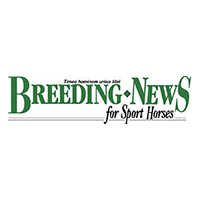By Jos Mottershead and Kathy St. Martin
Photography: Courtesy Equine-Reproduction.com
Without getting into the actual selection procedure for the type of mare to be bred – which is a separate subject entirely and will vary from breed to breed – we can certainly look at different age groups as an initial consideration:
Age as an initial consideration
The younger mare – younger meaning under the age of 13 – is likely to present the least number of issues in the establishment and maintenance of pregnancy. It must be kept in mind that at the younger end of the spectrum, the filly must have started cycling regularly and be showing adequate maturity for motherhood. If it is felt that the filly is not yet adequately mature to maintain her own pregnancy, one can always consider flushing an embryo for transfer to an appropriate recipient mare. When dealing with a mare closer to 12 years old, one should consider prior parental status.
If this is a maiden mare – with the caveat that some of the issues relating to older mares discussed below may start to be seen – she is going to more likely be an easier mare in which to establish pregnancy. If however she has had multiple pregnancies, it may be worth considering that she may possibly have some ‘wear and tear’ on her reproductive tract which could cause problems. I liken the mare’s reproductive tract to tires on your car. If the car is 10 years old but has only 5,000 miles on it, then the tires may well still be in good condition; on the other hand if the car is six years old but has 150,000 miles on it, the tires are likely to be worn out. The same therefore may be the case with a mare – she can be a younger mare that’s had multiple foals and has more ‘wear’ than a slightly older mare that’s had no foals. The optimal age group for easy breeding will be found with mares between the ages of about four and 12.
Once the mare surpasses the age of 12 – and particularly if she’s a maiden mare – it is generally agreed that issues are more likely to be present which can make conception and/or pregnancy maintenance more difficult. One of these issues can be related to the ability of the cervix to open adequately to allow clearance of breeding-related fluids – discussed in greater detail below as it may also be seen in other age groups. (We will be publishing an article regarding other problems that may be encountered when breeding mares in this age group in an up-coming issue under the title ‘Breeding the older maiden mare’.)
When the mare reaches her 20s, both the safety (for her) and ease of breeding are often debated. As a general rule, for a mare with no obvious significant problems, the answer to the question “when should I stop breeding her” is “when she will no longer get pregnant”. Clearly if there are physical problems present, then they should be taken into account. The answer may be different and obvious, but in the absence of problems, anthropomorphism should not become a factor. It should be remembered that in the wild mares continue to breed until they no longer conceive. In fairness, it must be noted that there is a very slight increased risk of a uterine artery rupture in the older mare, but it should be underlined that it is slight.
Certainly the decision to not breed an older mare may be made if she has experienced a difficult foaling which “takes a lot out of her” – but conversely some older mares who have been life-long broodmares can be distinctly unhappy if they don’t have a foal of their own.
Evaluations: Basic – and cheap!
‘Cheap and easy’ evaluations are always the favoured first steps in breeding a mare, and a very simple one is to look at the mare’s overall physical condition. An excessively fat (obese) mare will be more likely to be suffering from metabolic issues such as PPID (pituitary pars intermedia dysfunction, also known as ‘Cushing’s syndrome’) or a precursor thereof. These conditions may also affect the mare hormonally, with lower pregnancy rates as a result.
At the opposite end of the scale, the excessively thin mare is also more likely to present a challenge, as often these mares fail to cycle (especially if they already have a foal at foot) and have a higher incidence of early embryonic death (EED). Rectifying these two ends of the physical spectrum prior to attempting to breed the mare will result in higher success rates and less frustration... To read the complete article you need to be a subscriber
CLICK HERE TO SUBSCRIBE TO BREEDING NEWS
SUBSCRIBERS CAN READ THE COMPLETE ARTICLE BY LOGGING IN AND RETURNING TO THIS PAGE




